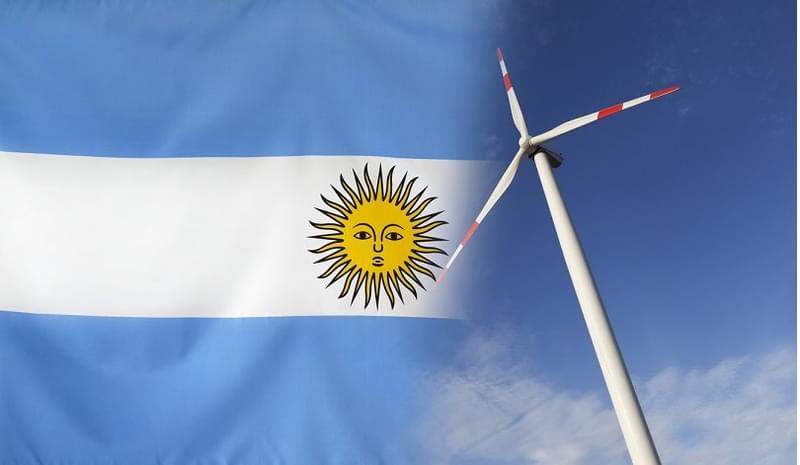During the winter, there was once heavy reliance on thermal power plants, which caused a significant bottleneck in the industrial sector as scarce fuels were prioritized to feed the plants and fulfill the supply needed by the residential sector (which is responsible for more than 40% of the electricity demand in the country).
Around two thirds of the electricity generated in 2016 came from thermal sources, less than a third came from hydro, around 5% from nuclear and a marginal part from renewables. Looking forward, the main goal of the government is to increase the share of electricity generated from renewable sources to around 20% at the expense of thermal plants; hydro would maintain its current proportion.
However, a sense of urgency obliged the government to take some short-term measures and the first electricity auction was aimed at increasing capacity quickly. Thermal turbines were the fastest way to get 1915MW of additional capacity out of 6611MW offers received. Given the initial success, additional projects of around 950MW which were not accepted in the first round were finally approved in a second. After this, the government started to deploy its strategic plan of increasing renewable energy production and the RenovAr (renewable energy plan) auction was rolled out.
The first round of RenovAr was a total success and more than 1100MW were awarded. In the second round (actually called round 1.5 as it was not expected to happen so soon) an additional capacity of almost 1300MW were awarded. The average price of RenovAr 1 came at 61USD/MWh while in round 1.5 it declined further to around 54USD/MWh in a highly competitive auction. Around 60% of the renewable capacity was awarded to wind projects, less than 40% to Solar and a marginal share went to Biomass, Biogas and Mini-hydro projects.
Low prices were explained not only by the competitiveness of the auction and window of opportunity in a country, where the lack of infrastructure is huge, but also because some fiscal incentives put in place. The government allowed the companies to import the required equipment without duties and it also gave them a few incentives related to internal taxes, allowing them to accelerate depreciation of fixed assets, delay tax payments, deduct financial expenses, and the like.
Furthermore, although PPAs of renewable energy projects (as with any other wholesale market producer) should be paid by electricity regulator CAMMESA, a trust called FODER was structured to backup those payments, if for some reason they were delayed. The legal framework is further enhanced by the fact that the companies under this regime may also claim a termination event in the case both CAMMESA and FODER do not comply with the payments, and they may either sell the electricity to any other third party or transfer the assets to FODER in exchange for a cash compensation. If the latter happens, the World Bank would also act as guarantor for up to USD500mm to pay for the project assets if the Argentine government fails to fulfill its commitments.
In this context, the power sector in Argentina is leading the corporate bond market in the country: Albanesi (USD250mm at 9.625% coupon), Genneia (USD350mm at 8.75%) and Stoneway (USD500mm at 10%) issued to carry on their capacity additions, while other companies in the sector like Aes Argentina, YPF Generación, Pampa Energía and Capex issued to carry on their broader investment plans or refinance maturities.
In the case of Stoneway (Araucaria Energy) they structured a project finance bond in an unprecedented transaction to build 4 thermal power plants operated by Siemens with all the associated revenues from the project pledged to repay the bonds. We expect more issuers to come to the market once the urgency is solved as the government will in the next few months roll out a combined cycle auction that requires a longer construction horizon.
For the distribution sector, 98% of Edenor’s clients – by the end of Cristina Fernandez’s reign – paid less than USD13 per month for the consumed electricity. Let’s remember that Edenor distributes electricity in the northern and richest part of the city and greater Buenos Aires. The sector recently received its first tariff review after more than 20 years, in an attempt not only to decrease the waste of cheap energy by retail users, but also to decrease the significant fiscal deficit where subsidies played and still play a significant role in the economy – accounting for around 4.2% of GDP in 2016. This is expected to decline to around 2.6% by the end of 2017.
That said, 2016 was a decisive year in terms of tariffs. The first few increases, both in the electricity and residential gas bills, were substantial. Even though previous levels were very low and obviously irrational, the measure was unpopular, particularly in the suburbs of Buenos Aires where the currency devaluation has brought price increases in food & beverages, lower real wages and higher unemployment. Some small businesses or local sport clubs couldn’t afford the bills. Judges throughout the country played a role during the year as many decided to block tariff increases because of the lack of public hearings. Finally, the case escalated to the Supreme Court which ruled in favor of residential users but was not a total defeat to the government as it left the door open to further public hearings (which were not binding).
After several political and judicial battles, the government finally held public hearings and set a path of tariff hikes that was a bit more gradual than anticipated. In February 2017, a full tariff review for the electricity sector was implemented, after which around two thirds of Edenor’s clients still pay electricity bills of less than USD27 per month. Two “minor” increases are still expected for November 2017 (+19%) and February 2018 (+17%+CPI), after which the cost of electricity to the end consumer will still be half of the real cost of producing that energy. In fact, according to the company, a residential user consuming 275kWh/month would pay around USD28 in Buenos Aires after the impact of the tariff review in February 2018 is factored in, while he or she would pay USD40 if they lived in the province of Córdoba, USD53 if in Brazil, or USD63 in Spain. There is still a long way to go.
Opportunities in the electricity sector are huge and the success of the recent auctions is a clear sign of that. However, bottlenecks exist, particularly in the transmission segment, where investments are also needed so that capacity additions can reach final users throughout the country. The government also needs to make sure CAMMESA remains a technical player, preserving its independence and complying with acceptable terms for its liabilities, so it does not turn into an additional burden for suppliers.





